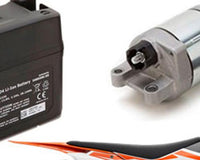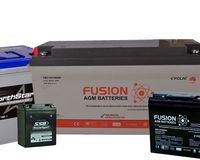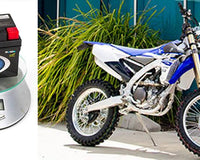Table of Contents
A replacement battery for a Duracell CR123A battery has to provide the same long-lasting power that the Duracell battery is known for.
Plus, the size and dimensions for the replacement have to be as near as possible to the original.
You can choose to replace your Duracell CR123 with a non-rechargeable 123 lithium cell from other manufacturers like the EL123A from Energizer (see table below).
| Manufacturer | Name |
| Eveready | EL123A |
| Panasonic | CR123A |
| Varta | CR123A |
| Procell | PL123A |
| Sanyo | CR123A |
| Maxell | CR123 |
| Rayovac | RL123A |
| Energizer | EL123 |
Alternatively, instead of the single-use ultra lithium (LiMnO2) chemistry of the Duracell 123A, you can opt for rechargeable batteries. A battery like this has Li-ion chemistry designed for multiple uses.
Today, we’ll take a look at the best choices of rechargeable batteries to replace your Duracell 123A ultra lithium battery.
CRP2 Batteries
CRP2 batteries can be used to replace CR123A batteries in specific devices.
The CRP2 battery has similar dimensions to CR123A Duracell batteries with a height of 36 mm, length of 35 mm and 19.5 mm diameter.
| Dimension | CRP2 | Duracell 123 |
| Diameter | 19.5 | 16.5 |
| Length | 35.8 | 34 |
One CRP2 cell can be used to replace two Duracell 123 batteries. The cell looks almost rectangular with cylindrical sides like two round cells joined together and smashed in at the back to flatten it. So it fits easily in the same space as two 123s.
Each cell has a nominal voltage of 6V (the same as two 123s) with a nominal capacity of 1500 mAh.
16650 Cylindrical Battery
16650 rechargeable batteries are longer than 123 batteries measuring 65 x 16 mm. However, they can be used as replacement batteries in devices that accommodate the extra length.
You need first to check if your torch or camera has extra room in the battery compartment.
The 16650 is a 3.7 volts lithium-based rechargeable battery which is higher than the 3 volts for 123s. This higher voltage means you can't use 16650s to replace Duracell 123 cells in low output devices as it might damage the device.
The batteries have a slightly higher capacity at 2400mAh (vs 2000 mAh of 123s), so they last a little bit longer than standard 123 batteries.
| Feature | 16650 | 123 |
| Voltage | 3.7 V | 3 V |
| Capacity | 2400mAh | 2000mAh |
6340 Rechargeable Batteries
16430 batteries typically have the same dimensions as CR123 measuring 34mm in length with a 16mm width. This makes them suitable replacements as they easily fit into any device that a Duracell 123 battery would fit.
They are typically sold as RCR123, which stands for rechargeable CR123.
16340's are Li-ion batteries that use a Lithium Carbon Dioxide chemistry (LiCO2). The cells have a higher nominal voltage of 3.7 volts vs the 3 volts of 123A’s.
So you will have to check if your device can take the higher voltage output before you use them as a replacement.
They work best for high voltage torches, cameras and LED lights. However, they might not be suitable for replacing 123A’s in lighter devices like alarms that might get damaged by the higher output.
They typically have a capacity of between 700 and 1000 mAh depending on the specific brand. This means they will give you a lower run time than with a primary Duracell 123A battery.
| Feature | 16340 | 123 |
| Length | 34mm | 34mm |
| Width | 16mm | 16.5mm |
| Capacity | 700–1000mAh | 2000mAh |
18650 Cylindrical Lithium Batteries
The 18650 battery is a rechargeable lithium-ion battery with dimensions of 35 x 18 mm. Their physical size is within the same range as 123s which means they make a suitable replacement.
Their output is between 3.6 and 3.7 volts. 18650 batteries are a good match to 123s for replacement in high drain devices like your camera, torch or LED lights.
The battery capacity ranges from 2000mAh to 3500mAh, so you’ll get a longer cycle time with these cells.
| Feature | 18650 | 123 |
| Length | 35mm | 18mm |
| Diameter | 18mm | 16.5mm |
| Capacity | 2000-3500mAh | 2000mAh |
What to Consider When Choosing Replacement Batteries
Replacing your batteries with new ones is a delicate process. While it may look as easy as finding a different one with the same dimensions, there is a lot at stake.
For starters, if you don’t get it right, you can damage the device, especially if you choose one with the wrong output or wrong chemistry. For instance, lithium batteries can usually only be replaced by another one with lithium chemistry.
Second, you risk causing damage to the battery itself if the machine drains it beyond its capacity. Some brands may also not be compatible, depending on the manufacturer’s specifications.
The best-case scenario is that the batteries will simply not work, which would sadly mean money down the drain for you.
So before you take the plunge, take time to think about some important factors like:
Rechargeable vs Non-Rechargeable
While the promise of not having to buy replacement batteries may seem appealing, it's not always the best-case scenario.
Some devices cannot handle the higher voltages of most rechargeable batteries. In which case, it's best to stick to primary Duracell 123 batteries for your replacements.
The Device's Output
The rechargeable equivalents of 123 batteries are lithium cells best suited for high output devices like your camera.
However, for low output devices, the long-lasting power of 123 batteries like the Duracell 123 can go for over 10 years. Because you will only replace them a few times during the life of the device, you won't need a rechargeable replacement.
If you aren't too sure which way to go when choosing your replacement, ask the experts for some guidance.
Frequently Asked Questions
What’s the Best Way to Dispose of Your Old Batteries?
The chemicals in the batteries can be harmful to the environment. That’s why you shouldn’t throw them out with the rest of your garbage.
Instead, separate your batteries and take them for recycling to your nearest waste management centre or recycling drop off facility.
Remember not to tamper with the cell’s casing and avoid puncturing or exposing the cell’s contents.
Also, ensure that you discard all the used ones when you replace your batteries. Never mix old and new batteries in the same device or else your devices may not work properly.
Does It Matter Which Battery Charger I Use If the Batteries Are of the Same Size?
Batteries may have the same size but different chemistries, which means they will charge differently. For instance, you can’t charge lithium batteries in a nickel-cadmium battery charger.
It’s best to buy batteries together with a charger and stick to the same type and brand of batteries every time you buy new ones.
Options For Replacing Your Duracell CR123 Lithium Batteries
Your Duracell batteries might have long-lasting power, but you will need to replace them at some point. When the time comes, you can find all your replacement options at HB Plus Battery Specialists.
Whether you need Duracell 123 batteries, a non-rechargeable equivalent or you feel it’s time to go rechargeable, we’ve got you covered.
We have in stock a wide range of Duracell 123 replacement options, both rechargeable and non-rechargeable lithium batteries, to suit your needs.
If you aren’t sure which ones to get, we can help—we’ve been at this for 30 years. We are happy to answer any questions you might have to help you find the best replacement options for your Duracell batteries.
Here’s what just one of our delighted customers had to say:
Pleased and Recommend. I can highly recommend The Battery Specialists got both quality batteries and excellent service. I will be buying again from them. Paul D. Bundaberg















